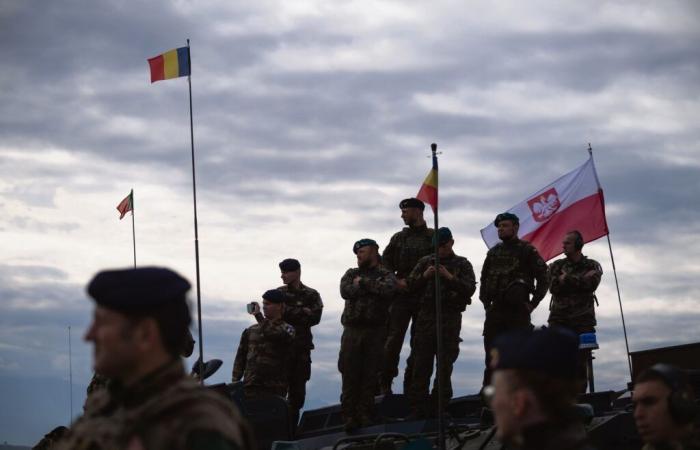
In the heart of Transylvania, more than a five-hour drive from Bucharest, autumn bursts with bright colors: green, red, yellow, brown. Here more than anywhere else, each leaf seems to mark the season on the Romanian trees. Added to this multicolored vision is the humid smell of the earth and changing vegetation. But if the scent of the Cincu plains yearns for peace, the sudden smell of gunpowder and the sound of cannons remind us that Romania is preparing for the possibility of war.
“Many Romanians still fear that the Ukrainian conflict will spill over to us”tells JDD Adrian Popa, local journalist. While Bucharest shares a border with Ukraine to the north, the man in his forties admits to feeling “safer with so many foreign soldiers” present in Romania.
This Wednesday, October 30, near this town of 1,500 inhabitants, France and NATO mobilized significant resources to simulate a response to an attack coming from the north. Called Dacian Fall, the exercise is one of the most important organized on Romanian soil since the start of Russian aggression. The objective: to repel an attacker in three very distinct stages. “We start with an intelligence phase, to locate the adversary, followed by fire support by artillery and air assets, then we finally deploy ground troops”details Colonel Jean Michelin.
Nine countries mobilized
To accomplish this mission, nine nationalities have assembled a significant arsenal. Spain and Romania mobilized four F-16 fighters as well as several helicopters, and the United States, for their part, committed a bladed aircraft. France deploys four Leclerc tanks, while Portugal, Belgium, Luxembourg, Poland and North Macedonia provide various armored vehicles. “In this type of exercise, the language barrier is a challenge: we all have to speak operational English, very different from everyday English,” explains Colonel Michelin, responsible for the 1,500 soldiers, including 700 French, who make up the multinational battalion present in Cincu since 2022.
While NATO builds up its force in eastern Europe to the rhythm of gunfire, Colonel Michelin continues: “Between countries, there are procedures to unify, particularly at the level of orders, and also a technical challenge. Our radios and our communication systems with which we communicate, such as requests for shots, must be compatible. » A detail to be perfected, as it still happens that soldiers mix in vehicles, radio in hand, to ensure optimal transmission between nations. “It’s normal, we’re gaining strength”tempers a officer between two shots.
The rest after this ad
Since February 28, 2022, as part of the Aigle mission, France has therefore deployed in Romania an alert battalion of the NATO rapid reaction force, which has become multinational since May 1, 2022 in order to prevent an expansion of the war. Alongside Bucharest, Belgium, Luxembourg and Spain, Paris plays the role of framework nation. In this function, French responsibility is “to aggregate the other nations” underlines General Loïc Girard, deputy commander of NATO's multinational southeast division. “Our army is learning a lot from French operational experience,” rejoices the Romanian Colonel Balica, not far from a Caesar cannon.
Drones worry the population
On the heights of Cincu, a light mist settles in, shrouding the exchanges of fire of all calibers for almost an hour. If Dacian Fall is a success, an important reality of the Ukrainian fighting has not been integrated: drone attacks. Since the start of the war, these devices have proven their effectiveness, transforming the simplest aircraft into a formidable weapon of the 21st century.
“Drone attacks worry the population. Romania is not prepared for this threat”deplores Adrian Popa. Faced with this fear, Colonel Michelin specifies that the units have “anti-drone means”while specifying that it is a “increasing capacity”. As for the absence of simulation of an attack in this exercise, he explains that this could not be included “for regulatory reasons, because we would have had to destroy one of our own drones, and assume the damage.”
Next spring, Cincu will host a new exercise, Spring Fall, with nearly 5,000 troops deployed. An XXL exercise, and perhaps the opportunity to integrate an offensive drone component?





